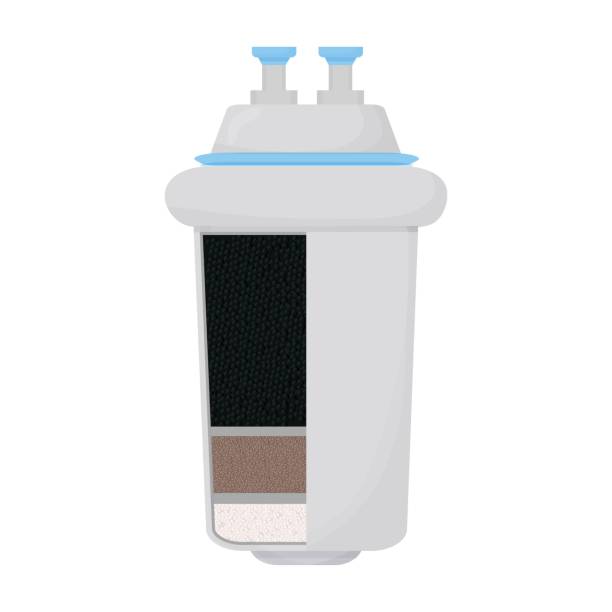Your tap water isn’t completely safe to drink. High chlorine concentrations and dangerous microorganisms can be found in tap water. Even though tap water meets some federal regulations, it can still harm your health in one way or another.
A water purification system cleans water by eliminating fluoride, dissolved solids, viruses, arsenic, and other impurities. This article will explain the differences between carbon filtration and reverse osmosis water treatment. Find out why combining the two results in the greatest water filtration.

Reverse osmosis: What is it?

Intense water pressure is used in the reverse osmosis (RO) separation process to push the source water through a semipermeable membrane, which keeps the solid pollutants on one side while allowing clean water to flow onto the other.
It allows water to travel through the membrane but prevents larger objects from doing so. Because of this, this method is efficient in eliminating anything larger than a water molecule, including frequent pollutants like lead, asbestos, chlorine, and several others.
Contaminants are removed from the water as it is pushed against the membrane, leaving only pure, clean drinking water behind. Reverse osmosis systems eliminate toxins and substances like:
- Chlorine
- Arsenic
- Bacteria
- Dissolved solids
- Nitrates
- Heavy metals
- Mercury
- Organic substances
- Viruses
- Parasites
The cleanest water for drinking and cooking is produced by reverse osmosis, which eliminates 97% of all water impurities. Reverse osmosis systems are frequently used in restaurants and other establishments that supply clients with clean water.
Carbon filtration: What is it?

Activated carbon is used in the water filtering process known as carbon filtration to remove organic compounds, heavy metals, and chlorine from water. However, carbon filtration can’t remove several microorganisms on its own. Rever osmosis devices can filter out considerably smaller particles than carbon filters.
Because metals, chlorine, and other contaminants that might lead to certain health problems have been eliminated, carbon-filtered water is healthier than unfiltered tap water. Comparing carbon filters to more sophisticated water purification systems, carbon filters are also frequently less expensive to buy, install, and maintain.
Approximately 10-15% of all pollutants or total dissolved solids (TDS) are removed by a carbon filter alone. On the other hand, reverse osmosis eliminates 95–97% of TDS. This is why a store-bought carbon filter can’t make tap water taste like a water bottle in regions with high TDS, like Phoenix.
A carbon filter can produce water with a better flavor in regions where TDS levels are not as high.
Reverse osmosis vs. carbon filters: which is better?
You should weigh the benefits and drawbacks of reverse osmosis and carbon filters while selecting one for your house. One-stage carbon filters are insufficient to completely remove all toxins that could be present in tap water, but they are ideal for eliminating chlorine, which enhances flavor and safety.
On the other hand, reverse osmosis filters will remove far more impurities, but you will lose beneficial minerals unless the system you use has remineralization technology to replenish these.
Is it important to use filters?
Over the past ten years, using a filter linked to a faucet inside a home has been customary. They remove dangerous impurities that make their way into your water through filters.
These dissolved sediments are a problem in certain locations more than others.
To install a filtration system appropriate for your needs, find out which ones you need to protect yourself against the most. Trace levels of the following compounds can be detected in tap water:
- Synthetic organic compounds (SOCs)
- Volatile organic compounds (VOCs)
- Aluminum
- Chlorine
- Arsenic
- Magnesium
- Lead
- Copper
- Mercury
- Calcium
- Nitrates
- Barium
- Radium
- Sulfate
- Cadmium
In addition to assisting in their removal, a home filtration system also removes contaminants that alter the flavor and odor of water. You may turn on the faucet and obtain a glass of water that tastes even better than regular distilled water when you have a good filter.
Final thoughts
No form of filtration or purification can eliminate all the dangerous elements in the water. Reverse osmosis is best for commercial usage, whereas carbon filters are suitable for residential use. It is advisable to combine the two if you want to obtain the finest possible water purification, which is always the ideal choice.

Jay
Jay is a health and wellness enthusiast with expertise in water quality and nutrition. As a knowledgeable advocate for holistic well-being, Jay successfully manages Type 2 Diabetes through informed lifestyle choices. Committed to sharing reliable and authoritative insights, Jay combines firsthand experience with a passion for enhancing health."
